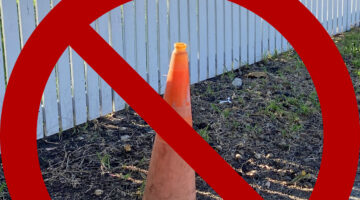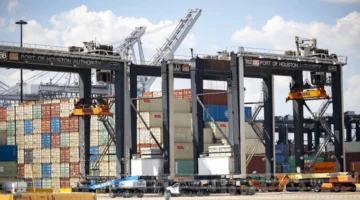Florida timber farmers face tough choices year after Michael
BLOUNTSTOWN, Fla. (AP) — The sunsets are a sight to behold in Joe Leonard’s neck of the woods these days. A year ago, lush stands of towering pines obscured the horizon, he said as he drove his pickup along a dusty Florida Panhandle road. Now, fields of thick grass mask row after row of stumps decaying into the soil that has sustained his family for five generations.
Up the road, heaps of rotting logs lay bare the scars that Hurricane Michael left last October when it ploughed through the region.
“It’s hard to describe how sick I felt when I came out here,” Leonard said as he surveyed a stand of snapped 30-year-old slash pine, their trunks big enough for a full bear hug.
The massive storm crashed ashore as a Category 5 hurricane with winds exceeding 160 mph (255 kph), the strongest ever recorded to hit Florida’s northern Gulf Coast. The storm killed more than two dozen people in the region, destroyed or damaged tens of thousands of homes and wrought catastrophic damage on the region’s timber industry.
It’s been an excruciating year for the Leonards and other Panhandle families who make their living off the land. A year after Michael, they face wrenching decisions about how to carry on.
Less than a fifth of the 2.8 million acres (1.1 million hectares) of timberland destroyed by Hurricane Michael have been salvaged. Tons of timber will most likely be left to rot. There are so many fallen logs that they’d fill more than 2.6 million logging trucks, which would circle the equator 1.5 times if parked end on end.
Trees once towered over much of Calhoun County, an inland expanse of tiny communities surrounded by forests that suffered the most catastrophic damage to the region’s timberland.
Stands of pines, once just steps from Leonard’s front door, are now mostly gone.
“One of the benefits is that now we see sunrises and sunsets in a way we’ve never seen before,” he said.
Without financial help, some timber farmers are looking for buyers.
Federal relief hasn’t come fast enough, even though the government authorized a $19 billion relief package — held in limbo until this past summer because of political clashes in Washington — to assist communities across the country hit by wildfires, flooding, tornadoes and hurricanes. Florida officials estimate that the timber industry sustained nearly $1.3 billion in losses.
Across the road from the Leonards, Michael Eldridge isn’t expecting any help soon as he continues to grapple with the devastation Michael wrought across his 360 acres (145 hectares).
“There was nothing standing,” he said. “Pitiful. Unbelievable. All these 33-year-old trees down like pick-up sticks, all laying atop one another.”
He sold his entire herd of cattle — 113 cows, bulls and calves — instead of spending the money to rebuild fences that went down with his trees.
“My wife and I planted them as a supplement to our retirement, and it didn’t work out that way,” said Eldridge, who has lived in Calhoun County all of his 72 years. “I thought it was a good investment.”
For now, there are no plans to sell. Where else would he go; what else would he do?
“I might as well stay here fighting,” Eldridge said. “That’s what I’m going to do until the day I die.”
Like Eldridge, many of the region’s timber growers operate mom-and-pop farms, some a couple dozen acres and others in the thousands. Unlike corporate landowners, few of these small-time tree growers can withstand upheavals like Michael.
Unlike cotton and oranges, timber isn’t usually insurable for loss. And unlike row crops that can bounce back more quickly, trees require generations to recover. A tree needs a dozen years before being harvested for pulp — and at least twice that time to harden into more lucrative lumber.
For some farmers, the new math doesn’t add up, according to Alan Shelby, the executive vice president of the Florida Forestry Association.
“There are many who simply don’t have the money to clean it up. They may try and sell the property. Or they may just leave it and let Mother Nature take its course,” Shelby said.
By some estimates, an acre of 30-year-old trees might fetch about $2,500. Clearing an acre of downed trees and replanting costs about $1,300 up front.
“It takes more than a broom and it takes more than your typical farm equipment,” he said.
It requires an army of loggers and equipment operators with chain saws and timber loaders to hoist fallen logs onto trucks.
All that requires loads of money, as well as a strong will to carry on, said Leonard, 59, whose family arrived in northern Florida from the Carolinas in the early 1900s.
“My mother doesn’t want to sell. My brother and I aren’t going to sell. But what happens after we’re gone?” Leonard asked.
His son Daniel, 28, expresses some of the uncertainty.
“To be honest with you, I’m not advocating that we go totally back to the timber. I would rather see us do something else. Let’s diversify a little bit,” he said.
His cousin Will Leonard, 29, a forester, also wonders how timber communities across the Panhandle will fare in the years to come, with the possibility that some mills could fall silent and jobs dwindle because of the catastrophic losses.
“This is a story that is going to have a much broader impact. It’s not just about the growers,” he said.
At the family farm, Daniel Leonard spoke of the fallen pines’ rings, each representing a year in the tree’s life but also recording the years his father, grandfather and those before them spent nurturing a livelihood they hoped would span generations.
“These trees have lots of stories to tell, but I’m sure they hadn’t seen anything like this,” he said. “Hurricane Michael was a once-in-a-generation kind of thing. Will we have another one in 20 years? I’m not so comfortable taking that risk.”
____
Follow Bobby Caina Calvan at http://twitter.com/bobbycalvan





No Comment